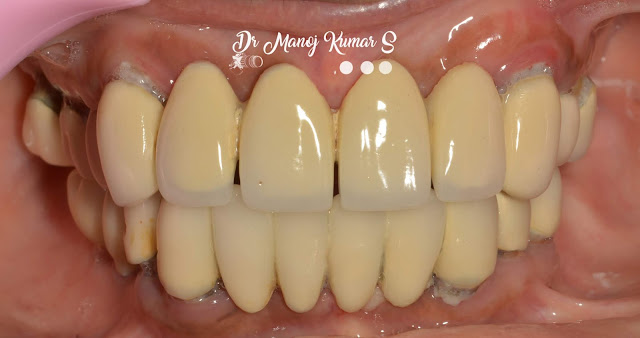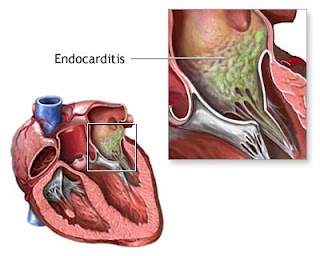Case 45: Cementation protocol for an emax- lithium disilicate crown
Case 45: Cementation protocol for an emax- lithium disilicate crowns
The chances for dislodgement of an all ceramic especially a glass ceramic is possible when isolation is not maintained during it cementation.
Here is a case with a dislodged emax crown which was done somewhere else a year ago. Bonded restorations normally have an excellent durability and longevity if luted following proper cementation protocols.
So what do we do to achieve that protocol?
Step 1: Isolate the tooth or teeth using a Heavy rubber dam and use of either Brinker clamps or Tie floss can be done to expose the finish line margin. In this case the margini was supra-gingival and hence a tie-floss technique was employed.
Step 2: Treating the cementing surface of the crown. Use of ultrasonics to remove any excess cement flecks attached to the crown is removed. Ideally if u have aluminium oxide air blast it can be used once. Later use 9% or 10% Hydro fluoric acid and etch the glass surface for 90 secs followed by rinsing and drying the surface. Once dry, apply a silane coupling agent and let it dry for 60 secs.
Step 3: Treating the tooth: Acid etch with 37% orthophosphoric acid for a duration of 20-30 seconds and then rise and dry the surface to see the frosted appearance. If you dont see it then there is a possibility of excess luting cement from the previous cementation to have stuck. Again use ultrasonic scaler to remove them carefully. Once etching is done apply bonding agent. Note: Do not cure the bonding agent as it may leave a thin coat if not applied properly and may interfere with the seating of the crown.
Step 4: Mix the resin cement- preferably a dual cure resin cement. Load it on the crown and seat the crown. Excess cement is carefully removed without disturbing the seated crown. Tack cure the margins and then its easier to remove the excess cement as one fleck. Then complete the curing cycle. Once that is done apply glycerin along the margins which helps in preventing an oxygen inhibition layer. Once done remove the rubber dam and assess the occlusion.
This case was done by me at Parasu Dental Hospital, Chennai
The chances for dislodgement of an all ceramic especially a glass ceramic is possible when isolation is not maintained during it cementation.
Here is a case with a dislodged emax crown which was done somewhere else a year ago. Bonded restorations normally have an excellent durability and longevity if luted following proper cementation protocols.
So what do we do to achieve that protocol?
Step 1: Isolate the tooth or teeth using a Heavy rubber dam and use of either Brinker clamps or Tie floss can be done to expose the finish line margin. In this case the margini was supra-gingival and hence a tie-floss technique was employed.
Step 2: Treating the cementing surface of the crown. Use of ultrasonics to remove any excess cement flecks attached to the crown is removed. Ideally if u have aluminium oxide air blast it can be used once. Later use 9% or 10% Hydro fluoric acid and etch the glass surface for 90 secs followed by rinsing and drying the surface. Once dry, apply a silane coupling agent and let it dry for 60 secs.
Step 3: Treating the tooth: Acid etch with 37% orthophosphoric acid for a duration of 20-30 seconds and then rise and dry the surface to see the frosted appearance. If you dont see it then there is a possibility of excess luting cement from the previous cementation to have stuck. Again use ultrasonic scaler to remove them carefully. Once etching is done apply bonding agent. Note: Do not cure the bonding agent as it may leave a thin coat if not applied properly and may interfere with the seating of the crown.
Step 4: Mix the resin cement- preferably a dual cure resin cement. Load it on the crown and seat the crown. Excess cement is carefully removed without disturbing the seated crown. Tack cure the margins and then its easier to remove the excess cement as one fleck. Then complete the curing cycle. Once that is done apply glycerin along the margins which helps in preventing an oxygen inhibition layer. Once done remove the rubber dam and assess the occlusion.
This case was done by me at Parasu Dental Hospital, Chennai














Comments